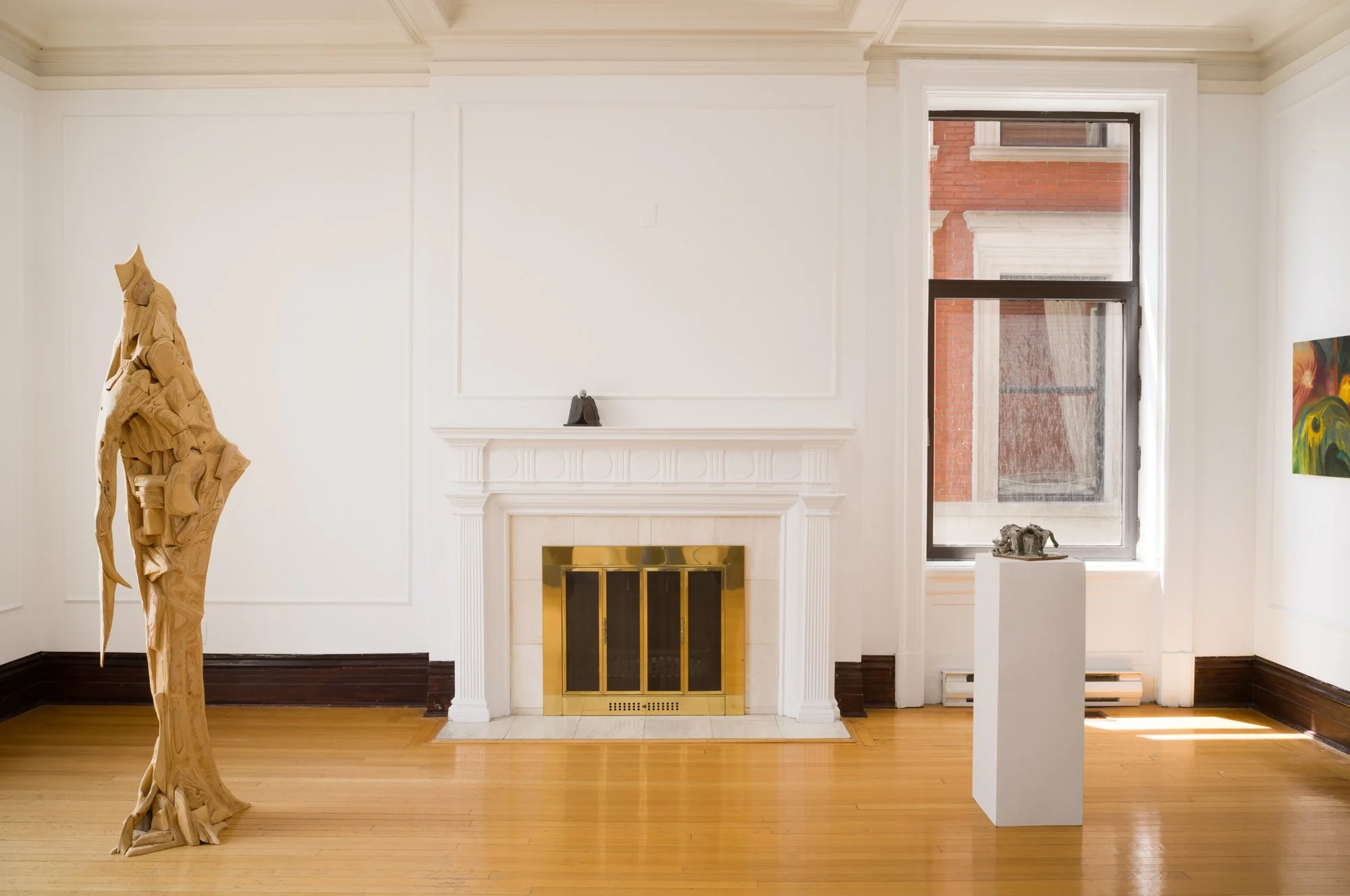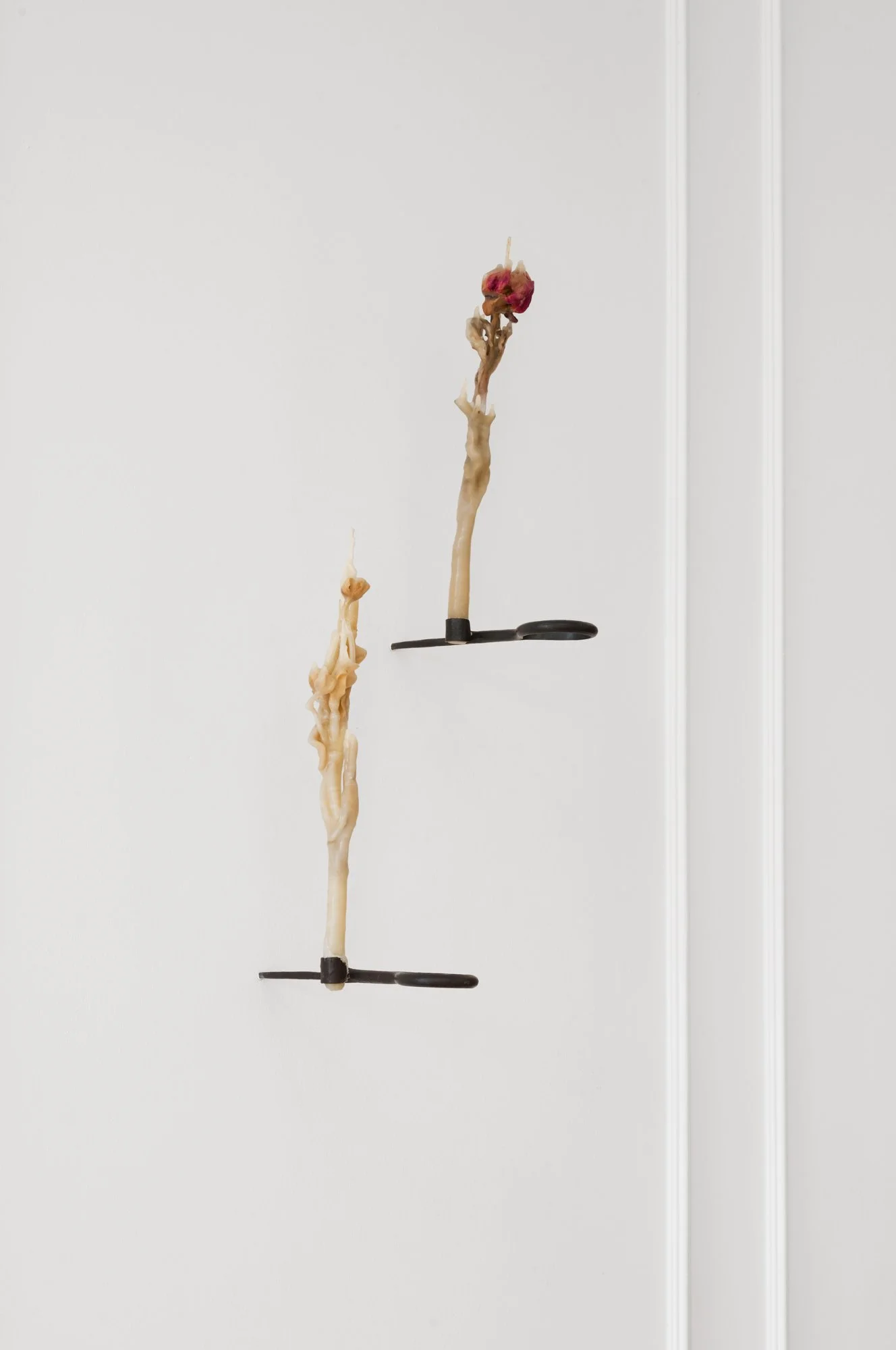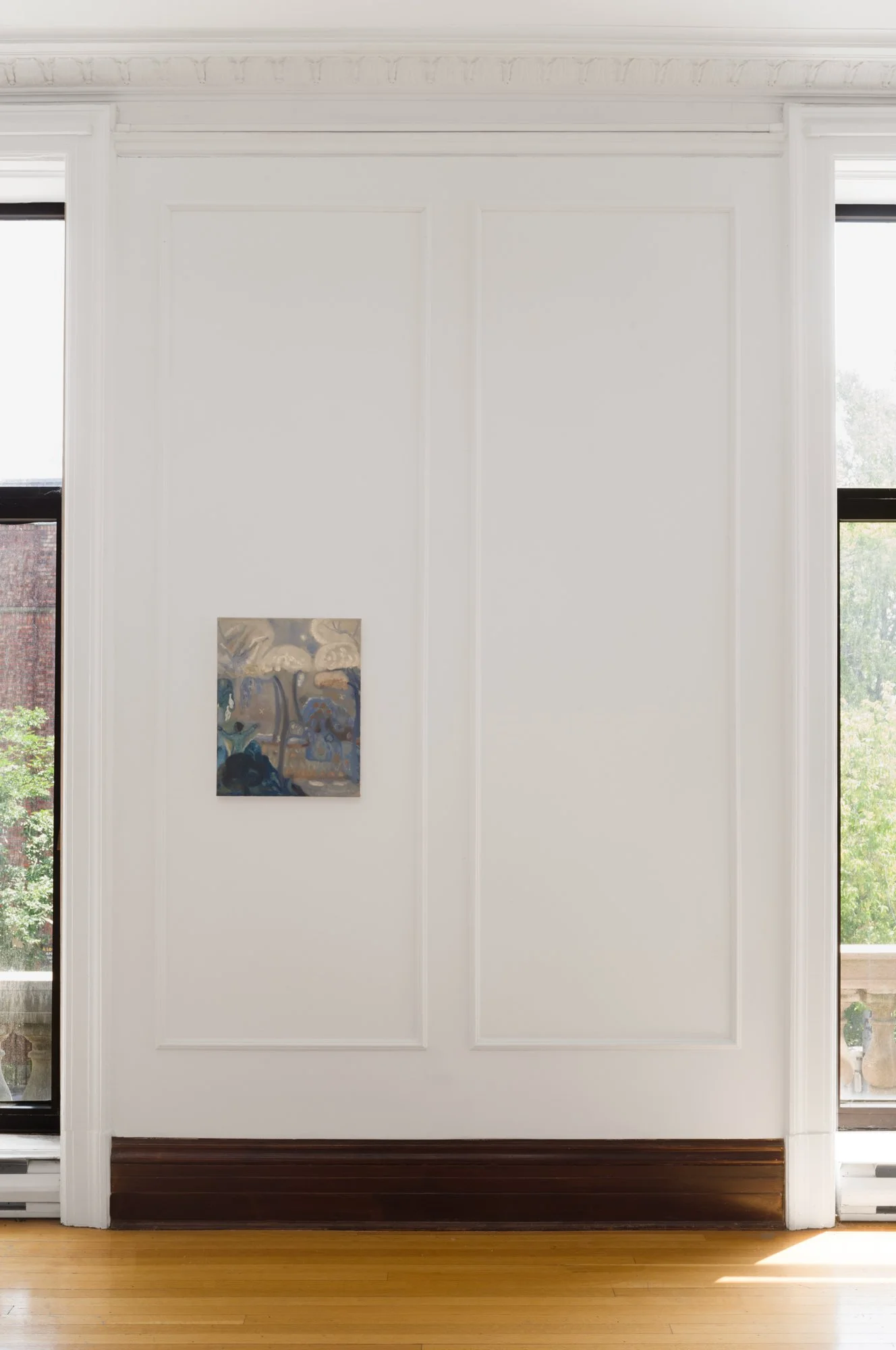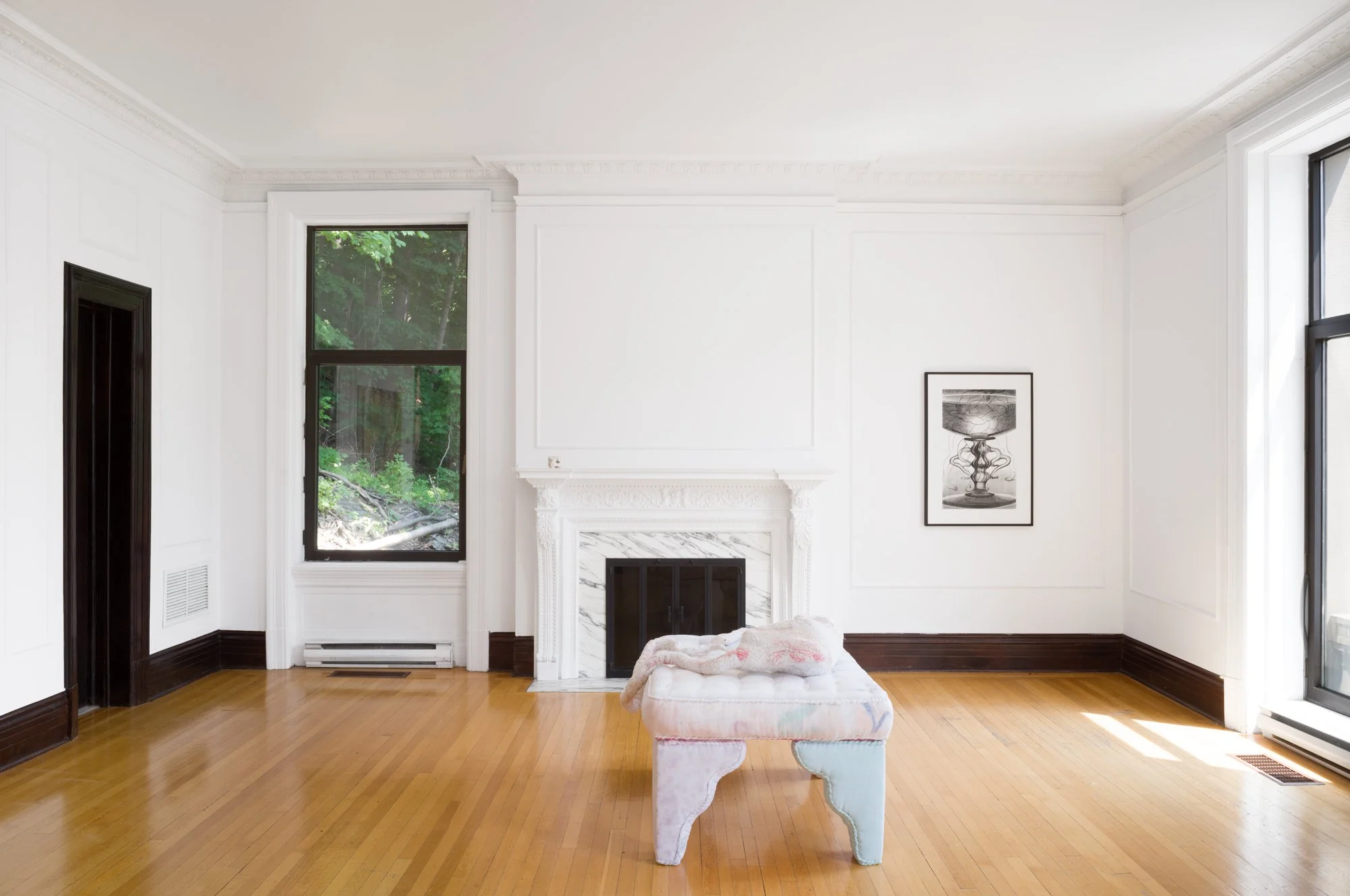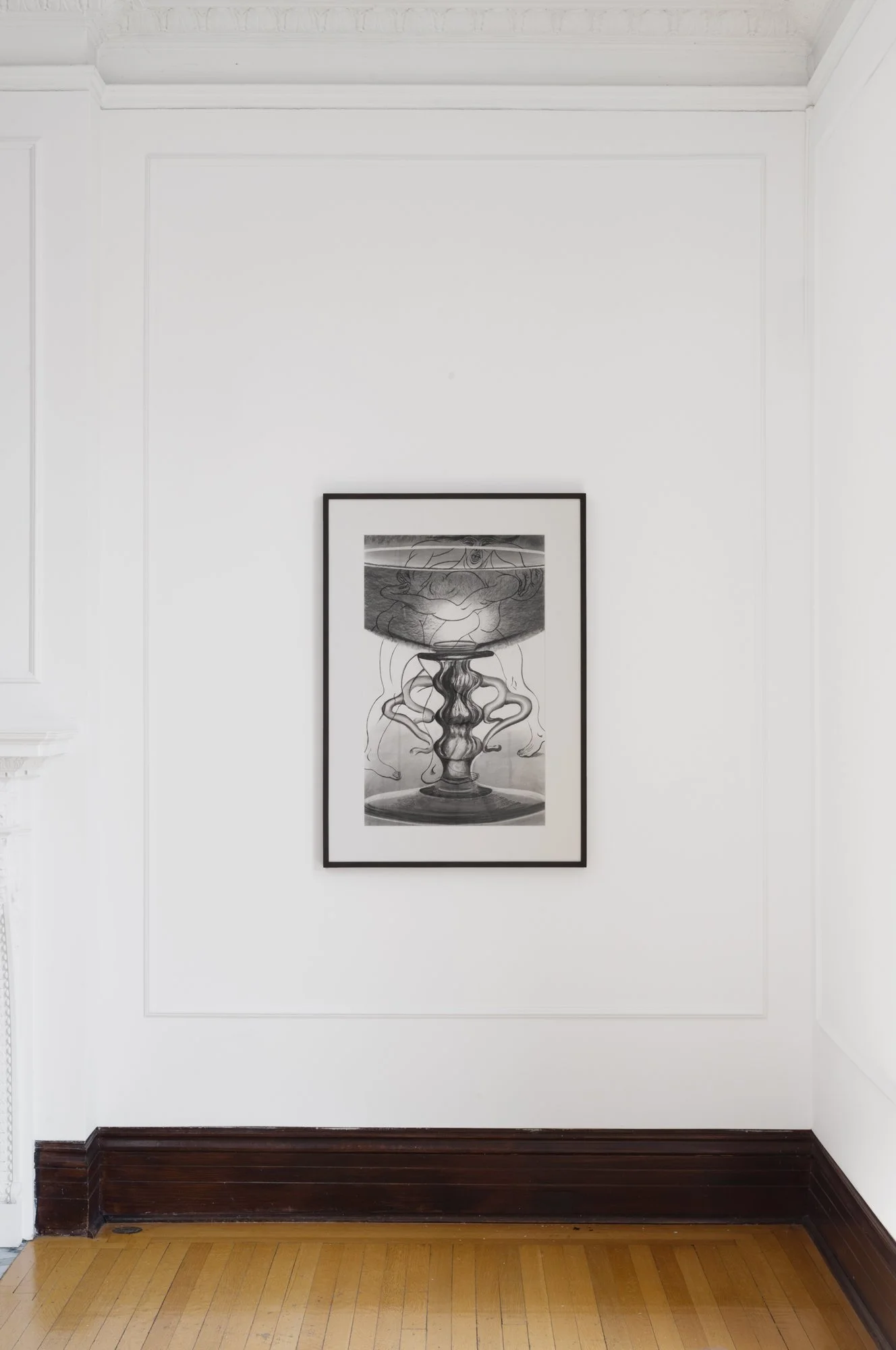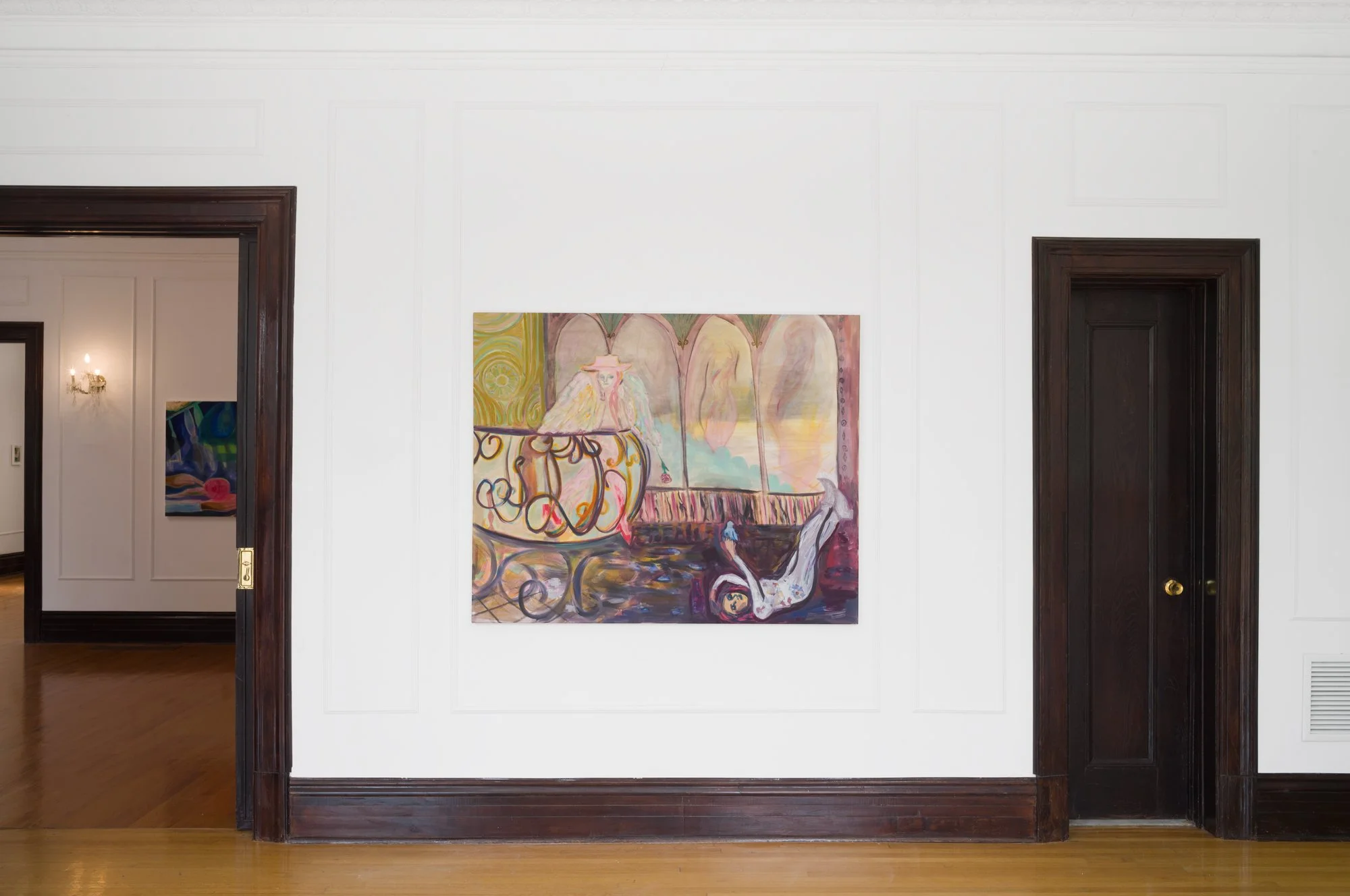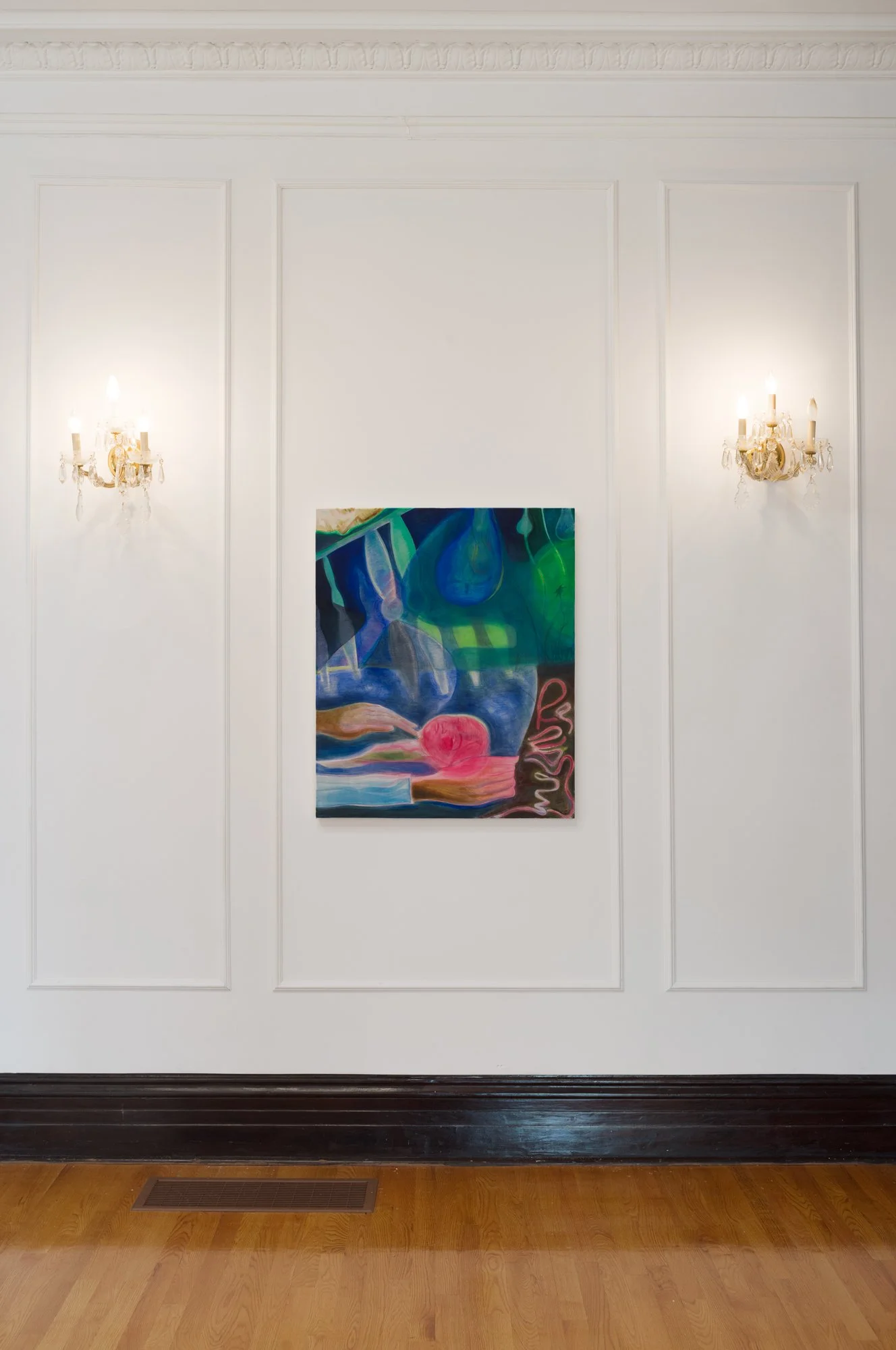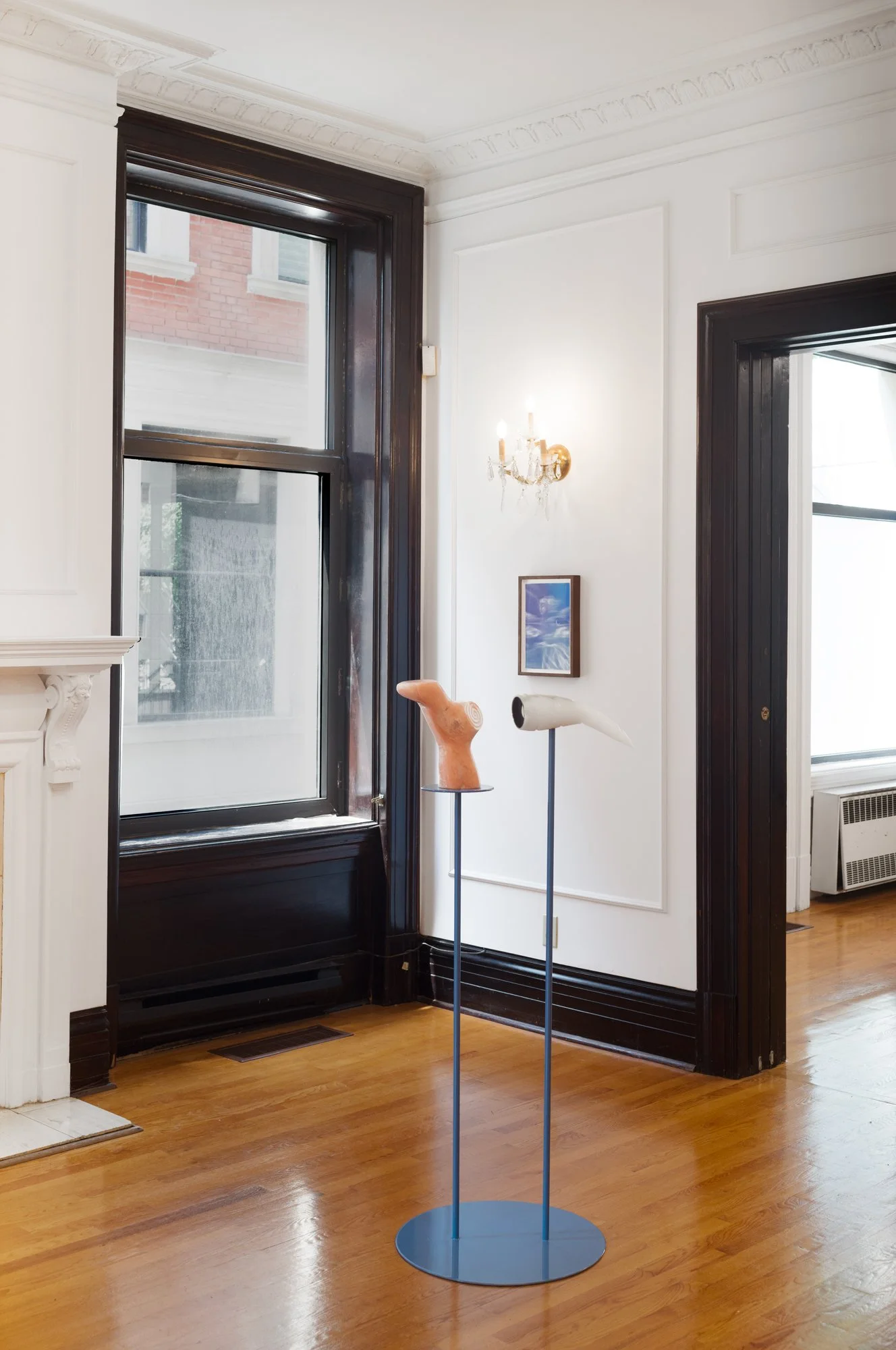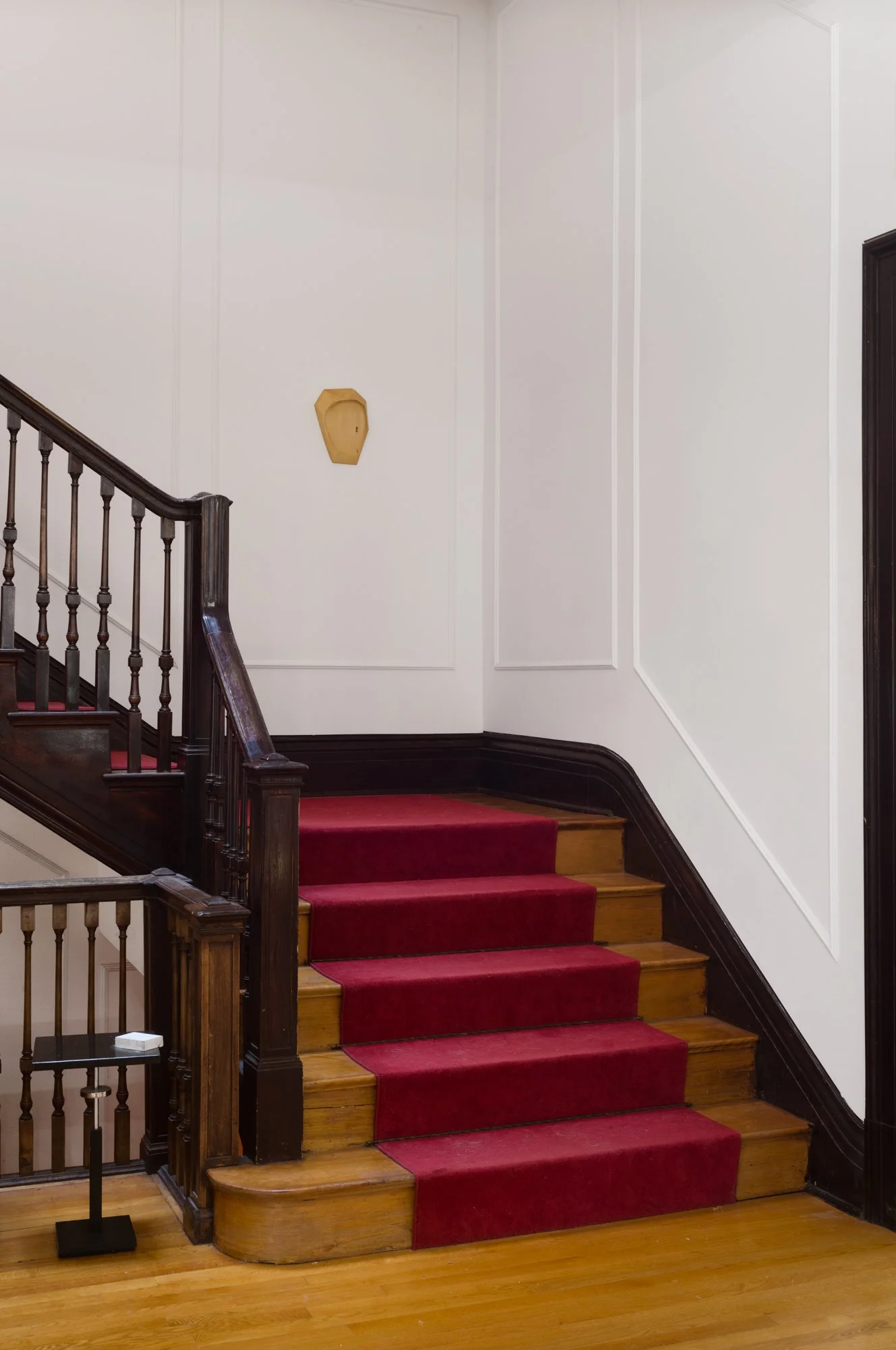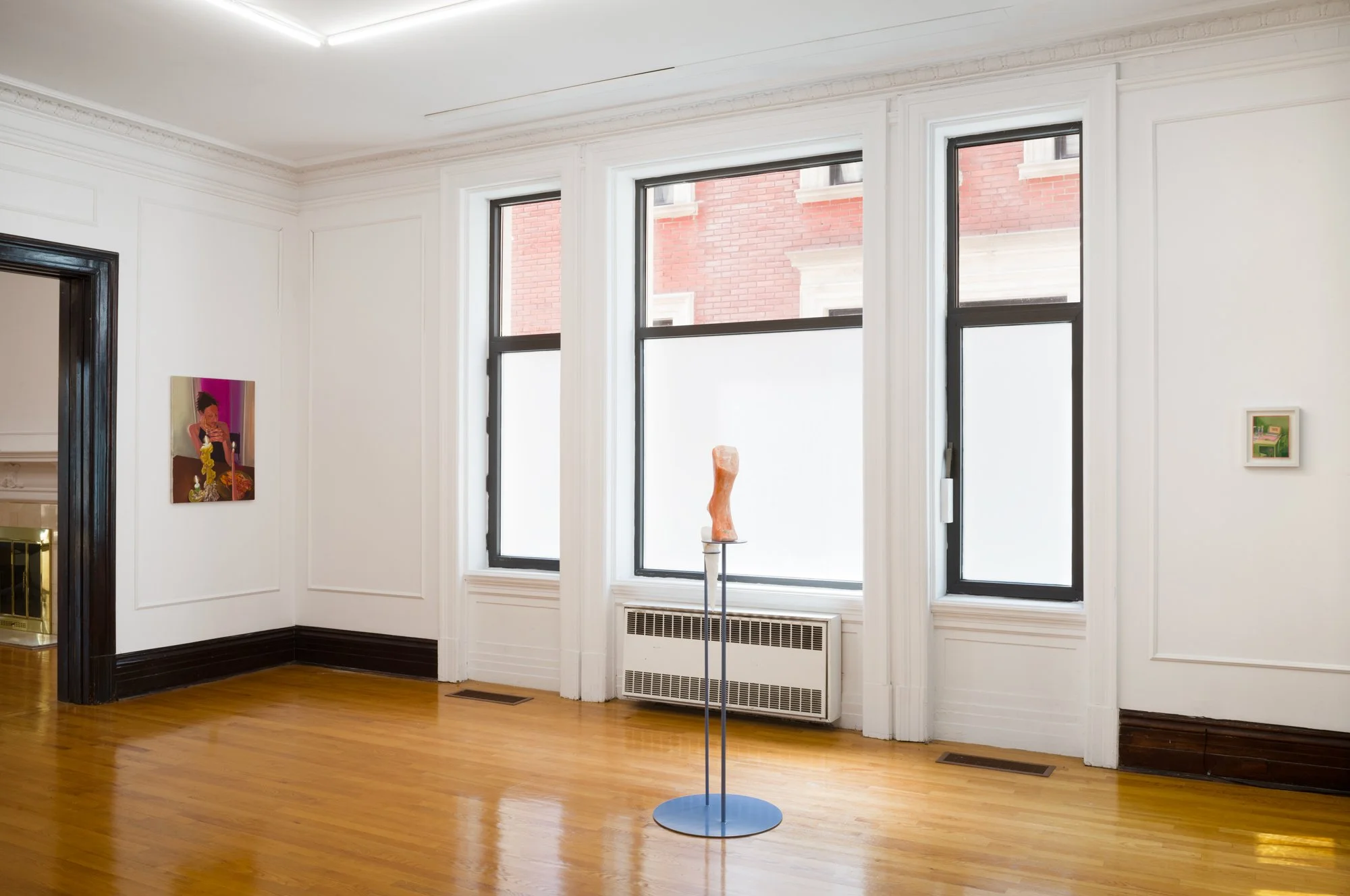Fools for Truth
Curators: Delphine Hennelly & Grace Kalyta
Artists: Alicia Adamerovich, Trevor Baird, Catherine Desroches, Ayla Dmyterko, Ben Gould, Oreka James, Élise Lafontaine, Alexa Hawksworth, Nadya Isabella, Manal Kara, Marlon Kroll, Darby Milbrath, Rose Nestler, Jacopo Pagin, Elisabeth Perrault, Anjuli Rathod, Oda Sønderland & Jessica Williams.
Dates: July 17 to August 23, 2025
Opening: Thursday, July 17, 4–7 pm (artists in attendance)
Venue : Pangée, 1305 ave des Pins Ouest, Montreal
-
Fools for Truth
“The trace of the quick of life hidden beneath the rounded appearances of life, life which remains hidden because we wouldn’t bear seeing it as it is, in all the brilliance of horror that it is, it is without pity, like the drawing must be,” - Hélène Cixous, p.32, Stigmata, Routledge, ©1998
Prompted by Hélène Cixous’ essay on drawing “Without end, no, State of Drawingness, no, rather: The Executioner’s Taking off” from the collection Stigmata, we have gathered artists whose work operates through a model of drawing while spanning multiple disciplines. Like sketches in flux, each contribution reflects a cyclical sense of time —perpetual, fluid and frenetic – yet non-linear, resolute in frenzy. These are works that stand as monuments to survival: to the self that emerges at daybreak, unfurling unhinged, not unscathed, laid bare in the aftermath. Drawing here is both a material gesture and a conceptual anchor. Movement across the page becoming the key to what escapes us, allowing us to elude the contours that define us. The mark a navigational tool for coping with that which breaks us, torments us, and ultimately frees us from the paralysis of ineptitude.
In dialogue with Jacques Derrida’s concept of “Arche-writing,” Cixous describes the repetitive gesture of form in language. Derrida claims that there is repeatability found in every experience; an event is described, making it past and no longer present evoking an image that is moving in cyclical fashion, forming memory, anticipation, past and present, repeat. As such, language functions on this innate, if minimal, repetition. Applied to drawing, Cixous considers Derrida’s concept of “the trace” to define that which is absent, a presence no longer seen, the free play of meaning through signs signifying that which is outside of frame or image. Instead of searching for a fixed truth or the closure of meaning, to trace is to mark an absence, to find meaning in relation, by association, and in the act itself.
There is a phenomenon of the nighttime hours, just before dawn, when circadian rhythms are the most susceptible to heightened fear and supernatural forces. Hour of the Wolf is the term we use to refer to this period of middle night wherein one could enter a bitter psychic battle, confronting the ability to decipher the balance between Good and Evil, true or false. Cixous writes: “I want the world of pulses, before destiny, I want the prenatal and anonymous night. I want (the arrival) to see arriving […] It is the dead of night. I sense I am going to write. You, whom I accompany, you sense you are going to draw. Your night is waiting.”
It may come as no surprise that artists prefer the night. The stereotype that creation happens best when the rest of the world sleeps is rampant. Many can relate to nocturnal restlessness, a somatic response to cognitive overflow that sparks tossing and turning — a corporeal rendering — while the mind races, charting and mapping paths through memory and imagined futures. Drawing seems particularly well suited for this frenzy of dubiety, functioning as a means of orienting oneself amid epistemological uncertainty with a provisional yet resonant marker of truth. Here is a lone buoy in a tumultuous sea, a marker of something real, a line that rings true.
By yielding to a fugue state as a method of moving toward the revelatory, all the artists in this group — whether working with clay, wax, paper, paint, or steel — seem to innately understand that drawing is not merely a means to an end but rather an acceptance of the cyclical: a mode of attunement, a way of inhabiting the world and moving in concert with it. For we too long for stigmata, for the trace of the infinite action of making. Claiming passage from Night to Day; the act of birthing; an endless state of becoming. For the work to exist, the action – violence, torment, cutting, changing, fixing – the swing of the executioner’s blade — this labor of love, of pain, of ecstasy precedes and leaves its mark.
Text by Delphine Hennelly & Grace Kalyta
-
Delphine Hennelly (b.1979) is a Montréal-based artist whose practice addresses the plurality of identity with notions of theatre, pattern, repetition, uncanny color palettes, and satire. Using anachronistic timelines, her paintings allude to both what is temporal and enduring, conjuring the notion of an omnipresent event. Hennelly represents archetypal subjects and relationships as a method to depict social patterns, performativity, and constructions of the self, removing such notions from any clear biography while pushing the boundaries of each archetype to subvert their fixity and activate their fluidity. Her work is particularly inspired by gender and feminist theories, tapestries, art history, and early Modernism. Hennelly has exhibited internationally, including recent presentations with Pangée (Montréal), CARVALHO PARK (New York), Cassina Projects (Milan), and Huxley-Parlour (London) and she is a three-time recipient of The Elizabeth Greenshields Foundation Award. Hennelly is represented by Pangée (Montréal).
—
Grace Kalyta (b. 1991, Treaty no. 1 Territory, Manitoba) is a Tiohtià:ke/Montreal based artist whose paintings and sculptures explore pursuits and performances of abundance in self-design, adornment, and spectacle. Kalyta collects images from online spaces that are dedicated to the quick circulation of objects and materials, cropping and enlarging throw-away images to create confrontational compositions. Through image-sourcing and the integration of decorative elements, Kalyta provokes high-low dichotomies in class and value systems, seduction and splendour, and the interplay of presentation and perception in material self-realization. Kalyta received a BFA in 2018 with Honours from Concordia University and is currently a MFA candidate at Concordia University. Kalyta has attended residencies in Iceland (Nes Residency, 2021) and Greece (faveLAB, 2019). Previous select exhibitions include: Hall of Mirrors (2024), Pangée, Foultitude (2023) at Projet Casa, Montreal; Untitled (2023) at Galerie Cache, Montreal; Spaghetti Western (2022) at GHAM & DAFE, Montreal; Opið Hùs (2021) Skagaströnd, Iceland; Privé (2020), Montreal; Textile Quintet (2019) at Pirgos Tsikaliotis, Leonidio, Greece, 2019; and On the Pulse (2018), Eastern Bloc, Montreal. Grace is represented by Pangée.

